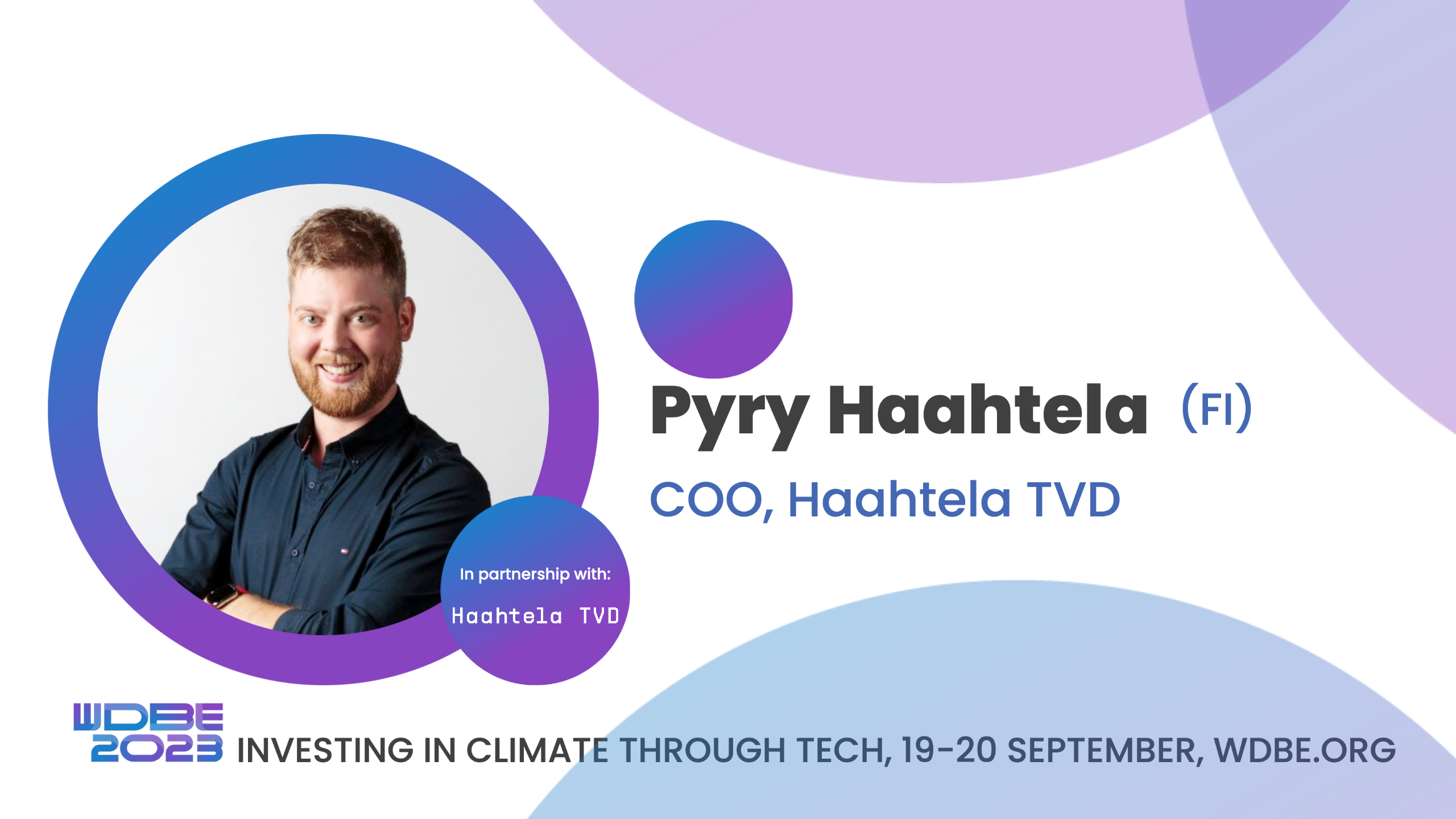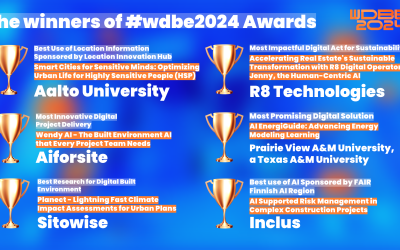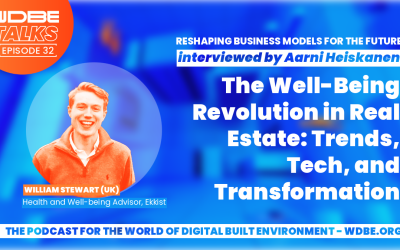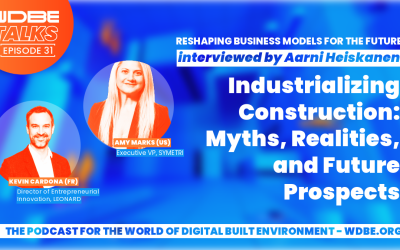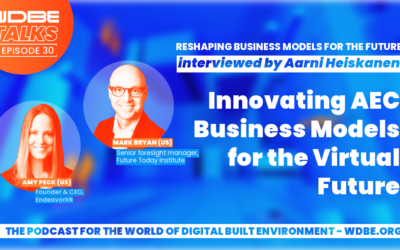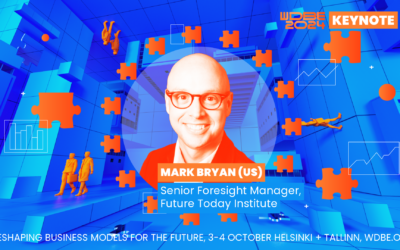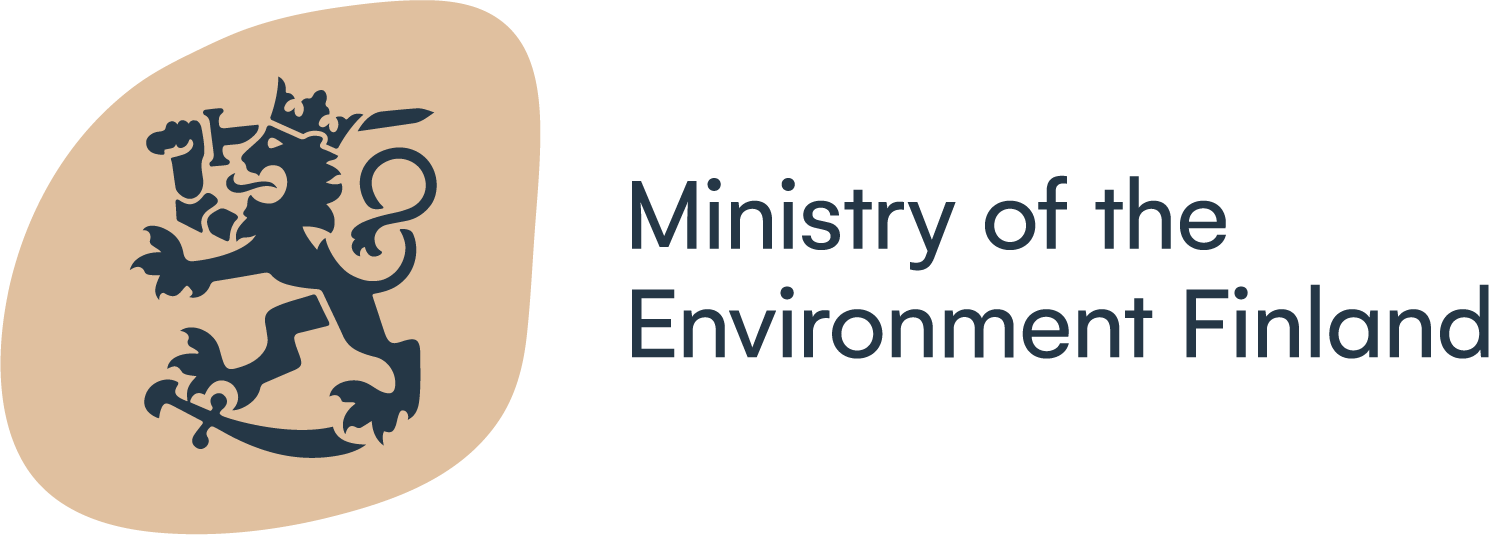WDBE UPDATES // Meet our partner!
Simulation-Powered Planning for Sustainable Building Projects
with Pyry Haahtela, COO Haahtela TVD
The sustainability of a construction project should not be an afterthought but a crucial consideration from the start. Pyry Haahtela, the COO of Haahtela TVD, shared his views on when and how clients and developers can best manage the carbon footprint of their projects with simulation.
The construction industry significantly contributes to carbon emissions, and finding ways to reduce its environmental impact is essential. According to Pyry Haahtela, 80% of a building’s carbon footprint is determined before the design phase. This means that early decisions in the planning and design process significantly impact a construction project’s environmental impact.
Haahtela, as a company, has expertise and data to back up its claims. The company started in 1975 as a construction cost consultancy and has since expanded its scope to project management, software development, and -about ten years ago- simulation. Haahtela employs over 170 experts, most of them engaged in project management and around 50 doing development work.
“The company was founded in 1975 to develop the construction industry,” Pyry states.
Pyry has studied real estate economics and developed models for land valuation. That primed him to create the investment analysis part of the simulation. Today, he sees himself primarily as an intermediary between clients and their needs and product development.
The critical early decisions
Most of the construction’s carbon footprint comes from building materials. Therefore, one of the most critical early decisions is the size of the building. It determines the amount of materials that constitute the embodied carbon.
Another critical decision is the architectural plan. The design determines the shape of the building, the various spaces, and their uses. The shape of the building also influences the structural solutions necessary to support it, which can impact the choice of building materials. Furthermore, the size and use of the spaces determine the technical services they require.
After the size and shape of the building have been determined, the next critical decision is the choice of materials. Additionally, the construction process, energy usage, and logistics also impact the carbon footprint of a building.
To sum it up, it is necessary to consider all these factors when making early decisions in the planning and design process.
Simulation for informed decisions
A construction project starts with a program that itemizes the number, size, and functions of spaces. Equipped with this information, and information about the size and material choices of the building, an architect creates the design. Other designers and, eventually, contractors join in on the project. Relatively late in the process, you start considering the project’s final costs and CO2 emissions. Until then, 80% of carbon-related decisions were already made. The designers and contractors can affect only the remaining 20%, Pyry claims.
“You can use low-carbon materials, and you can use more sustainable energy on a construction site, but you can really only influence a very small part of it there,” Pyry reminds.
To give clients more control over the outcome, Haahtela TVD has developed a simulation model that reverse-engineers the design and construction process and shows the financial and environmental consequences of the decisions made early on.
Haahtela’s simulation model results from over 20 years of data accumulated and analyzed from hundreds of construction projects. It considers a project’s functional and other requirements and predicts the most viable design solutions. They, in turn, define the cost and carbon footprint of the building. This all can happen before any designers are hired for the project.
Costs and carbon go hand-in-hand
Haahtela has used its simulation engine for project steering and cost management for over ten years on various projects, from office and mixed-use buildings to museums and hospitals. The simulation has proven to be valuable and accurate.
Exciting results have ensued since the company added carbon calculation to the simulation. It turned out that the embodied carbon and construction costs have a strong correlation.
Pyry mentions as an example an architectural competition with four entries that they analyzed. The correlation between price and CO2 was evident for each entry. The difference between the most expensive and most economical designs was over 20%. However, they were each of the same design quality. In other words, reducing CO2 did not result in higher costs or compromised design solutions.
The industry’s future
Pyry believes that in the future, property developers and owners will emphasize right-sizing buildings, ensuring they are efficient and serve their purpose optimally. However, he thinks that ecological construction materials are not the decisive solution for carbon reduction.
“Since concrete creates a lot of CO2, of course, you can think about how to make it low carbon, but it will still cause emissions. The low-carbon concrete will also cost you more,” says Pyry. “I don’t say it’s a bad solution; it’s a great solution. But if you can reduce the amount of concrete you use, that will have a really big impact.”
According to Pyry, the ultimate question is whether you need to build at all. If we have to create something new, we should do it better and more efficiently than before.
Haahtela is a partner of the World of Digital Built Environment Summit in 2023. You can meet Pyry at the event that takes place in Tallinn and Helsinki on September 19-20. Get your personal and group tickets at WDBE.org.
More Updates
WDBE 2024 Awards Winners: Highlighting the Advancement of Built Environment
The World of Digital Built Environment (WDBE) Summit announced the winners of the WDBE 2024 Awards which highlight notable digital advancement in the built environment. This year, submissions were received across six categories, showcasing practical and innovative solutions in areas such as sustainability, research, project delivery, and AI.
WDBE-talks: The Well-Being Revolution in Real Estate: Trends, Tech, and Transformation
In the podcast episode, William delved into the burgeoning field of health and well-being in the built environment, a relatively new focus within real estate. He shared his journey from project management and asset management to his current role, driven by a keen interest in how our living and working environments impact our health.
WDBE-talks: Industrializing construction: Myths, Realities, and Future Prospects with Amy Marks and Kevin Cardona
In the podcast episode, Amy and Kevin discuss the challenges the construction industry faces and the necessity of shifting business models to achieve more sustainable and efficient construction practices.
WDBE-talks: Innovating AEC Business Models for the Virtual Future with Amy Peck and Mark Bryan
In this episode of WDBE Talks, Aarni Heiskanen had the pleasure of hosting two distinguished guests from the USA: Amy Peck, Founder and CEO of EndeavorXR, and Mark Bryan, Senior Foresight Manager at Future Today Institute. Amy and Mark will deliver keynotes at the upcoming WDBE 2024 conference, focusing on reshaping built environment business models for the future.
Digital Transformation of the Built Environment Sets New Requirements: Future Today Institute Expert Sheds Light on Future Prospects at WDBE2024 Summit
Mark Bryan, Senior Foresight Manager at the Future Today Institute, which focuses on strategic foresight, has been confirmed as a speaker for the World of Digital Built Environment (WDBE) 2024 Summit.
WDBE-talks: New Business Models Unveiled with Olivier Lepinoy and Jaan Saar
In this WDBE Talks episode hosted by Aarni Heiskanen, two WDBE 2024 keynote speakers,
Olivier Lepinoy and Jaan Saar, discuss the significance of reimagining traditional business
models within the construction sector.
Olivier is the visionary founder of HYPER Construction, and Jaan is the Chief Evangelist at Future
Insight. Both thought leaders have experience innovating business models and share their
insights in this podcast.

